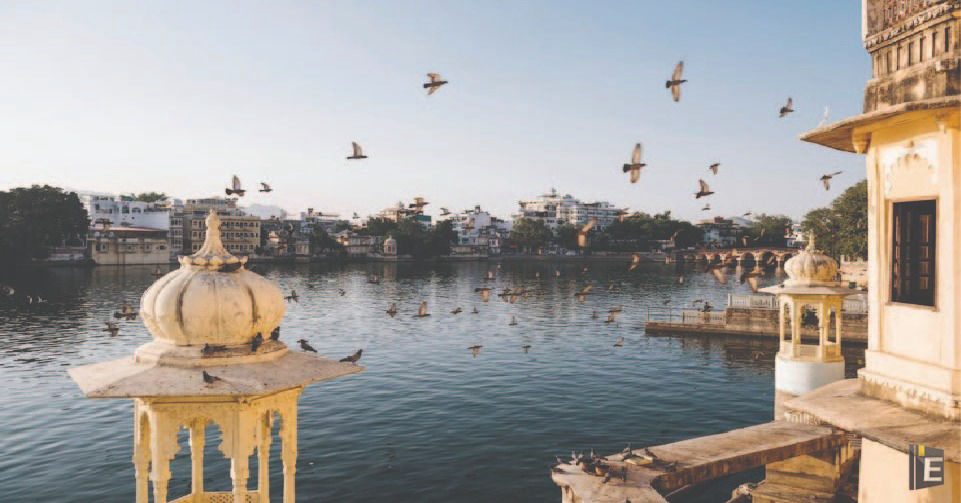Rajasthan Common GK Quiz and Answers

Welcome to the Rajasthan Common GK Quiz and Answers blog! This platform is your gateway to enhancing your knowledge about the culturally rich and historically significant state of Rajasthan. Explore various quizzes designed to test your understanding of Rajasthan's history, geography, culture, traditions, famous personalities, and more. Challenge yourself with our interactive quizzes and discover fascinating facts about this vibrant state. Whether you're a resident or an enthusiast, join us on this exciting journey to uncover the wonders of Rajasthan through engaging quizzes and detailed answers.
Rajasthan Common GK
In this article Rajasthan Common GK Quiz and Answers, we are sharing the most and latest important questions and answers related to Rajasthan history, geography, economy, polity and Rajasthan Basic GK under the Rajasthan General Knowledge section.
Also, Read Latest Current Affairs Questions 2023: Current Affairs Today
Test your knowledge and stay ahead with our General Knowledge Mock Test and Current Affairs Mock Test– a perfect way to challenge yourself and stay updated!
Rajasthan Common GK Quiz and Answers
Q : Dudhwakhara Peasant Movement was related. to which state?
(A) Jodhpur
(B) Jaisalmer
(C) Bikaner
(D) Jaipur
Correct Answer : C
Explanation :
1. “Dudhwa Khara Movement”, was an important independence movement in 1942.
2. Some important people who led this movement were Hanuman Singh Budania and Nyola Ram Jaria.
3. The leaders participated in “Bikaner Rajya Praja Parishad” to join the freedom struggle.
4. Dudhwa Khara is a village located in Churu district of Rajasthan.
5. This place has many designed mansions and camel safaris.
In which year the Jaipur state declared female infanticide practice (Kanyavadh) illegal?
(A) 1840
(B) 1842
(C) 1844
(D) 1846
Correct Answer : C
Explanation :
1. Kota was the first princely state of Rajasthan to declare female slaughter illegal. In 1834 AD, Maharaja Bhim Singh of Kota declared female slaughter illegal and banned this practice. This step significantly reduced the practice of female slaughter in Rajasthan.
2. After Kota, Udaipur, Jaipur, Jaisalmer, Bikaner, Jodhpur and other states also declared female slaughter illegal. In 1853 AD, the British government also made a law declaring female slaughter illegal.
The first princely state to legally abolish female infanticide was -
(A) Jhalawar
(B) Jaipur
(C) Shahpura
(D) Kota
Correct Answer : D
Explanation :
1. Kota was the first princely state of Rajasthan to declare female slaughter illegal. In 1834 AD, Maharaja Bhim Singh of Kota declared female slaughter illegal and banned this practice. This step significantly reduced the practice of female slaughter in Rajasthan.
2. After Kota, Udaipur, Jaipur, Jaisalmer, Bikaner, Jodhpur and other states also declared female slaughter illegal. In 1853 AD, the British government also made a law declaring female slaughter illegal.
In which of the following places were Maukhari Yup ( 238 A.D. ) inscriptions found?
(A) Barnala
(B) Bairath
(C) Badwa
(D) Badali
Correct Answer : C
Explanation :
Maukhari Yup inscription (238 AD) has been found in Barwa village of Kota district of Rajasthan. This inscription is from the reign of King Vikramaditya of the Maukhari dynasty. The achievements of Vikramaditya have been described in this inscription.
The famous temple situated at Dhulev is devoted to which Jain Tirthankar?
(A) Mahaveer
(B) Parshvanath
(C) Shantinath
(D) Rishabhdev
Correct Answer : D
Explanation :
1. The famous temple located in Dhule is dedicated to Lord Rishabhdev, the first Tirthankara of Jainism. This temple is also known as "Kesariaji" or "Kesariyanath". This temple is situated on the banks of the Koel River amidst the caves of the Aravali mountain range. This temple is a major pilgrimage site of Jainism.
2. A black stone statue of Lord Rishabhdev is installed in this temple. Lord Rishabhdev is also considered the eighth incarnation of Hindu Vishnu. This temple is considered one of the four main religious institutions of Mewar.
Gulal Bai and Krishna Kumari are famous for-
(A) Swaang Folk Dance
(B) Nautanki Folk Dance
(C) Gauri Folk Dance
(D) Khaval Folk Dance
Correct Answer : B
Explanation :
Gulaal Bai and Krishna Kumari are famous for Nautanki folk theatre.
"Jhorva" Song of Rajasthan is -
(A) a separation (Virah) song
(B) sung to celebrate birth in the family
(C) Bride farewell song
(D) harvest song
Correct Answer : A
Explanation :
The song "Jhorwa" is a separation song in Rajasthan. It is sung by a woman in mourning for her lover. In this song the woman recalls the happy times she spent with her lover and expresses the sadness of being without him.
Which of the following match is not correct?
(A) Rajab Ali Khan - Veena player
(B) Amir Khan - Sitar player
(C) Allah Jilai Bai - Maand singer
(D) Ravi Shankar - Nad player
Correct Answer : D
Explanation :
All of the following matches are correct.
(A) Rajab Ali Khan - Veena player
(B) Amir Khan - Sitar player
(C) Allah Jilai Bai - Maand singer
(D) Ravi Shankar - Sitar player
Which queen of Maldeo got 'Bahuji - Ro - Talab' constructed near Mandore?
(A) Hira-De- Jhali
(B) Swarup-De-Jhali
(C) Uma-De-Bhatiyani
(D) Parbati Sisodeni
Correct Answer : B
Explanation :
1. Maldev was an Indian ruler of Marwar, later known as Jodhpur.
2. Maldev expanded the Jodhpur fort and strengthened the structure around Ranisar.
3. Chidyanath was defeated due to encroachment in the fort area.
4. His queen Swaroop D Jhali, who built 'Bahuji Ro Talab' near Mandore.
The achievements of the rulers of which dynasty are mentioned in the Bijolia Inscription?
(A) Sisodias
(B) Chauhans
(C) Rathores
(D) Parmars
Correct Answer : B
Explanation :
1. The Chauhan inscription of Bijolia is also known as the Bijolia inscription (1170 AD).
2. The text of this inscription is in the Sanskrit language.
3. The Bijolia inscription is carved on a large rock to the north of a reservoir associated with the Parshvanath temple in the Bijolia temple complex.



